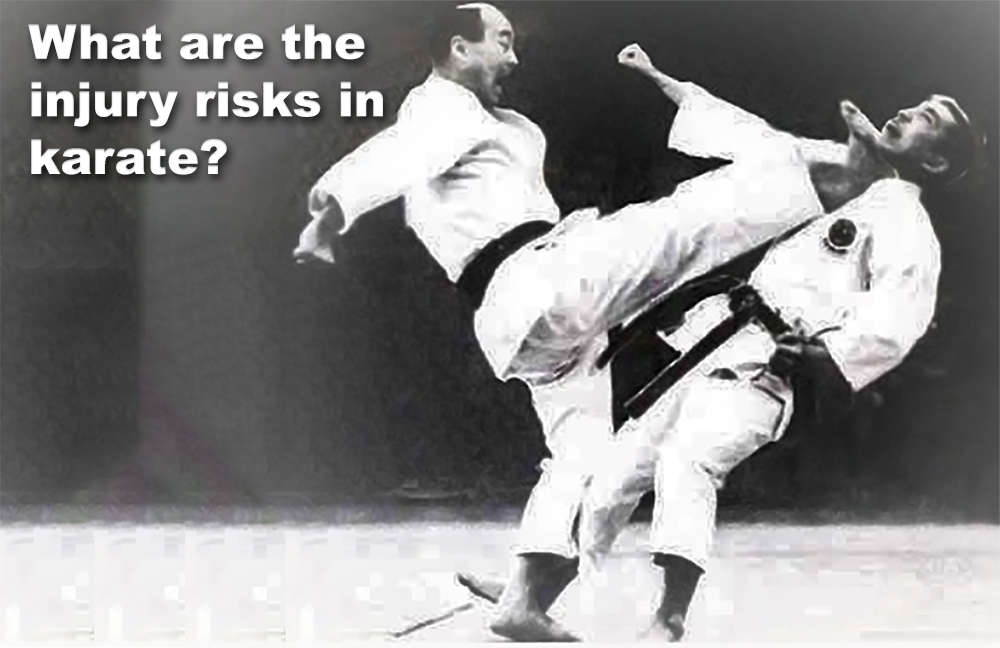
What are the injury risks in karate?
Posted by ADAM CARTER on SEP 13, 2022

Throughout history certain people have become Masters of their art.
For our students, fortunately injuries a rare occurrence at our Dojo. However, there are some injuries such as bruises, sprains and strains that can occur despite everyone’s best efforts.
Martial arts are a surprisingly safe form of physical activity, controlled training is statistically very safe.
Training injuries unfortunately do happen. If you train for a sporting competition, if you spar in the dojo, practice pressured self-defense drills, then I think it’s reasonable to expect an injury from time-to-time. Some people engage in combat sport, some ride bikes down mountains, some play rugby, or football etc etc. Such physical activities will inevitably result in occasional injury.
Preventing martial arts injuries is not an easy task, and not every injury can be avoided. The most common injuries are sprains, strains, cuts, and bruises. Broken bones also occur. These injuries frequently affect the knee, ankle, shoulder and elbow. Hands are particularly vulnerable to injury during striking martial arts.
These injuries occur because some of the exercises and techniques are hard on the muscles, joints and ligaments. Especially so if there is an ineffective warm-up, cool-down, or training too infrequently,
However, there are actions you can take to assist your body before and after training. Proper preparation is vitally important. Maintain your fitness between sessions, warm up with mobility exercises, cool down and stretch effectively after training….. and stay hydrated, to name a few.
Also, it is not uncommon to get injured outside of training. Some of the injuries do not render you incapable of training, but if you do wish to train, make sure to tell your instructor about the injury.
I’ve had a few training injuries myself over the years. Broken ribs, black eyes, cuts, dislocated shoulder and fingers, various strains, bruises, bumps and pulls.
Practitioners need to look at that “balance” of risk versus reward in their own training and work out what works for them and their goals. It won’t be the same for everyone.
So where do the martial arts fit into the equation? It seems you’re far more likely to be harmed in the dojo than in the infamous ‘Street’.
It’s true that way more people are harmed during physical activity than as a result of crime; because exercise and sport are very common, whereas violent crime is comparatively rare. I train most days. I’m not facing violent crime most days.
Violent crime is rare (even though it seems to be on the increase), but the damage (mentally and physically) can be severe, so it’s worth taking sensible precautions. And the use of physical skills can be part of that.
The risk to your health from inactivity is HUGE, and martial arts can provide a safe and enjoyable way for remaining healthy that is suitable for all ages.
There is a risk of injury, but on balance the far greater risk comes from inactivity. If martial arts keep you active, and you enjoy them, then they can be a significant part of a healthy and enjoyable lifestyle.
Injuries and their causes can be many and varied, and hence the precautions taken to minimize injury are also many. An injury from training maybe more likely than a violent encounter. Self-protection is not only protecting yourself from crime, it’s also being diligent and responsible through personal care, in keeping injury to yourself and others to a minimum.
